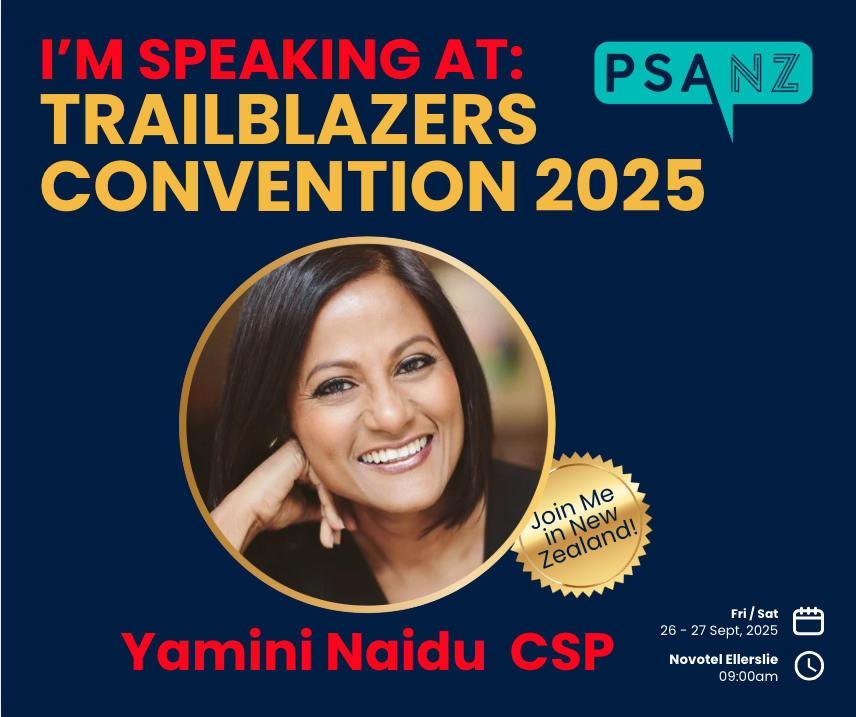
I wanted to love Meditations by Marcus Aurelius. Stoic wisdom? Ancient life lessons? Yes, please.
But the audiobook? It felt like being gently lulled into a coma.
The narrator’s voice never changed. Same tone. Same pace. Same volume.
And that right there is one of the most common mistakes presenters make.
If your voice doesn’t change, your audience will. Into people who are mentally writing grocery lists. Or checking their phones. Not because they’re rude but because the human brain craves contrast. If everything sounds equally important, nothing is.
Your voice is your most potent presenting tool. And like any good instrument, it needs range.
The best speakers—whether it’s Brené Brown or Barack Obama—don’t just deliver information. They use pace, tone and volume to guide how we feel, what we remember, and when we lean in. And you can, too. Here’s how:
1. Pacing: Speed and Stillness
Slow down before a key point to build anticipation. Speed up during a story to create energy.
💡 Try this and read aloud: “Stoic wisdom? Ancient life lessons? Yes, please!” quickly, like you’re excited. Then slooow down for “It felt like being slowly hypnotised into a coma.” Feel the shift?
2. Volume: The Whisper Trick
Sometimes, the most powerful thing you can do is whisper. It pulls people in.
💡 Whisper “Same tone. Same pace. Same volume.” See how it instantly grabs attention?
3. Tone: Mirror Emotion
Your voice should match your message. Speak the way you feel.
💡 Say “I wanted to love Meditations” with genuine enthusiasm. Then, “But the audiobook?” like it truly let you down.
4. Authority: Cut the Uptalk?
Ending every sentence like it’s a question? That’s uptalk—and it makes you sound unsure.
💡 Say, “This is important.” with certainty. Now try, “This is important?” Hear the difference? The second version sounds like you’re asking for permission.
5. Repetition: Say It Twice, Differently
Repetition = reinforcement. Your audience won’t catch everything the first time, so if something matters, repeat it. But vary your emphasis.
💡 Read this out, emphasising the bolded words.
“Your voice is your most powerful instrument.” (Pause.)
“Your voice is your most powerful instrument.”
Elevating your voice doesn’t have to be overwhelming. Start small. Pick one technique and try it. The more you experiment, the more natural it feels.
Soon, you won’t just be talking—you’ll be captivating.
I’m taking a short break for Easter. Wishing you a joyful, peaceful holiday—and I’ll be back in your inbox on May 2nd. (I know. May. Already!)

Access 101 Ways To Discover Your X Factor
If you’ve ever felt that you possess a unique spark but struggled to define and harness it, this comprehensive resource is your key to unlocking the extraordinary within. Inside this treasure trove of wisdom, you’ll find a wealth of inspiring and practical techniques to identify and nurture your X Factor.
Recent Posts

Did you know art and presenting share a unique goal?

The oldest easy hack in the world

Enough craft, now to the art of presenting

What is the most exciting way to start a story?

Be Still My Beating Heart – Adrenaline in Auckland

The internet can sometimes make you feel 100 years old
Categories
- Books4
- Business storytelling articles37
- Business storytelling examples50
- Business storytelling techniques93
- Business Storytelling training66
- Case Study5
- Communication4
- Conference Speaker10
- Examples of Story66
- Inspiration39
- Interview with…7
- Latest Posts184
- Life hacks4
- Presentation Skills22
- Speaking23
- Technology3
- Thoughts113
- Uncategorized5
- Workshops2
- Writing3
- X Factor14
